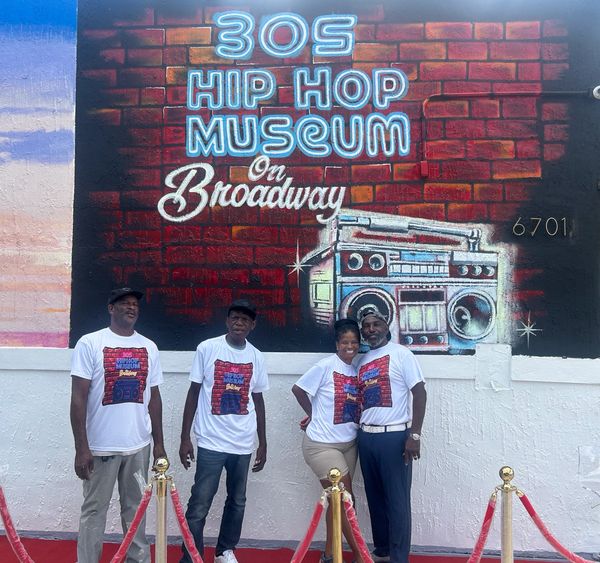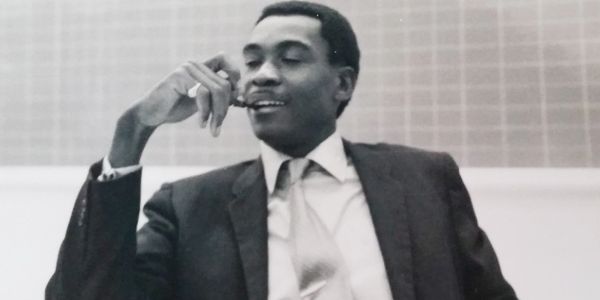
305 Hip-Hop Museum on Broadway
A Located at 6701 NW 18th Ave, Liberty City, Miami, the 305 Hip-Hop Museum on Broadway stands as a cultural landmark dedicated to preserving, celebrating and showcasing the rich and distinctive hip-hop heritage of Miami’s “305” area code. Also, with our Hip Hop Board members, we work to ensure that the culture is preserved.

Why This Museum Matters
- To preserve the music, artists, and community culture that emerged in Miami, especially from neighborhoods like Liberty City.
- To connect that culture to historical contexts, including the pivotal social events that shaped the city’s Black community, such as the 1980 unrest.

Historical Context: The 1980 Unrest
On May 17, 1980, a verdict by an all-white jury in the death of Arthur McDuffie, a black Marine veteran who was beaten to death during a motorcycle stop, triggered widespread civil unrest in Miami’s Black neighborhoods—most notably in Liberty City and Overtown.
This uprising exposed long-standing tensions around race, policing and economic inequality in Miami, and its effects rippled through culture, art and music in the years that followed. The museum’s location in Liberty City is thus especially meaningful—it roots the story of Miami hip-hop in the very community that helped shape it.
Miami’s Hip-Hop Legacy & The Museum’s Focus
The 305 Hip-Hop Museum doesn’t just chronicle national hip-hop history—it homes in on the artists, crews, and sounds that emerged from Miami. Among the figures and movements with strong local ties are:
- Trick Daddy – A Miami rapper who rose to fame in the late 1990s/early 2000s with his raw street-inspired sound.
- Trina – Often called the “Queen of the South,” Trina is a Miami native whose work brought Southern hip-hop and Miami sensibility to a broader audience.
- Flo Rida – Bringing a more pop-/dance-oriented hip-hop vibe, Flo Rida represents a different facet of Miami’s hip-hop evolution.
- Betty Wright – While better known as an R&B/soul singer, her influence on Miami’s music scene helps bridge the lineage between earlier Black musical traditions and hip-hop’s emergence.
- Local crews/groups you may find highlighted: Picallo Boys, Ball Gressy, Uncle Luck—each reflecting community-based hustle, raw lyricism and local identity (though public documentation on each may vary).
What to Explore Inside
Visitors to the museum can expect:
- Archival photographs, posters, flyers, and memorabilia from Miami’s hip-hop beginnings
- Listening stations featuring local radio mixes, mixtapes and early tracks
- Exhibits tracing the lineage from Liberty City/“305” roots through to mainstream success
- Community-oriented stories: how neighborhoods, local parties, block events and DJ culture built the foundation
- Educational material connecting the social-historical context (like the 1980 riots) to how local youth turned to music, arts and self-expression
Why It Matters for Miami Culture
- The museum serves as a preserver of local voice: Hip-hop in Miami wasn’t just an echo of New York or L.A.—it was its own thing, shaped by the tropics, Caribbean influence, Miami’s diverse Black and Latin populations, and neighborhoods like Liberty City.
- By placing physical space in Liberty City, the museum gives a home base to stories that too often get overlooked in mainstream music history.
- It provides a bridge between past and future—helping younger generations understand the socio-political roots of Miami’s sound and inspiring new voices from the community.
Visiting Tips
- The address: 6701 NW 18th Ave, Liberty City, Miami – make sure to check hours and whether appointments or guided tours are available.
- Consider pairing the visit with a walk through the surrounding neighborhood to sense the local rhythm, street-life vibe and historical layers.
- Encourage reflection: ask visitors to consider how local history (race, economy, community) shaped music and identity, not just the beats or lyrics.
- Bring headphones or an audio recorder: some exhibits may provide interactive listening stations—note down the local references, slang, and production styles that differ from other cities.


This website uses cookies.
We use cookies to analyze website traffic and optimize your website experience. By accepting our use of cookies, your data will be aggregated with all other user data.